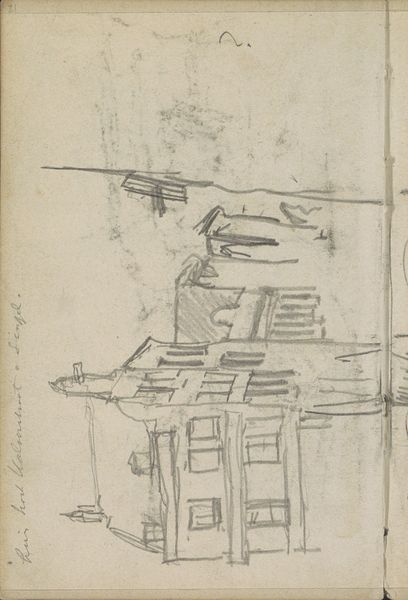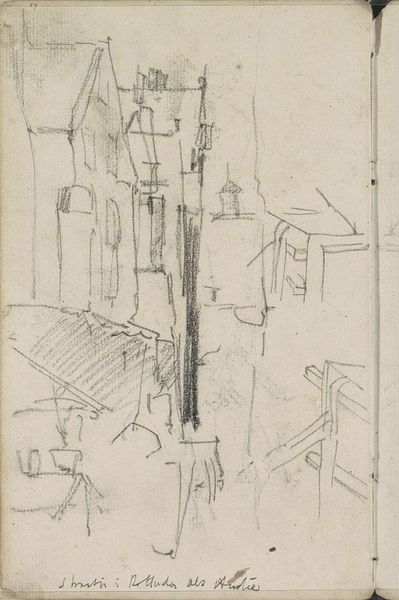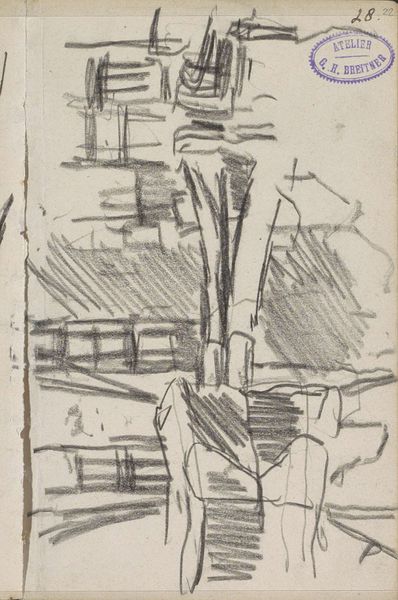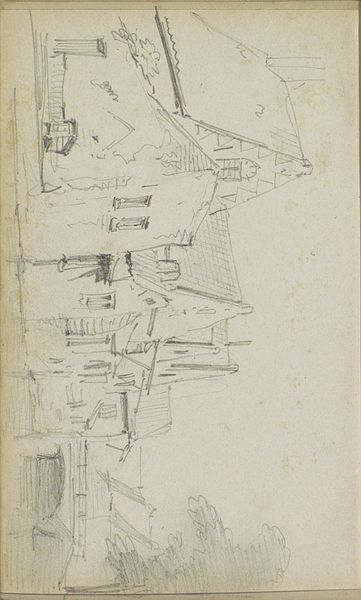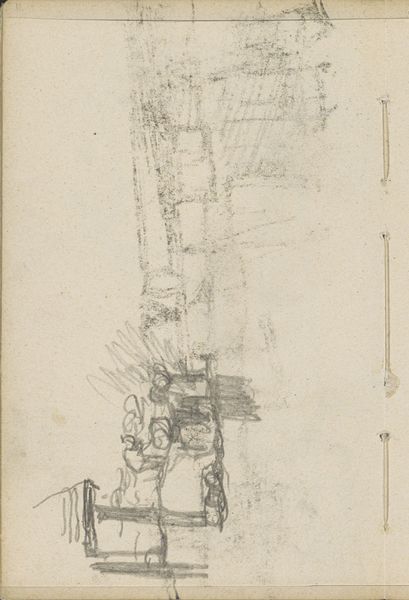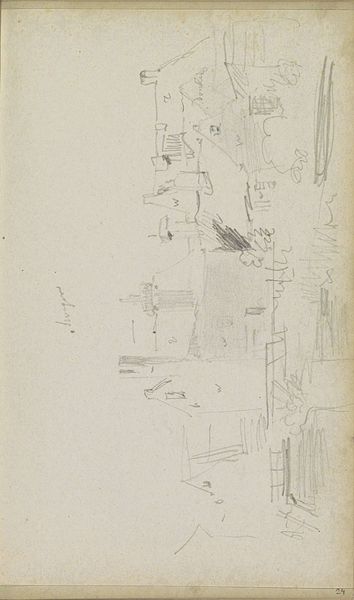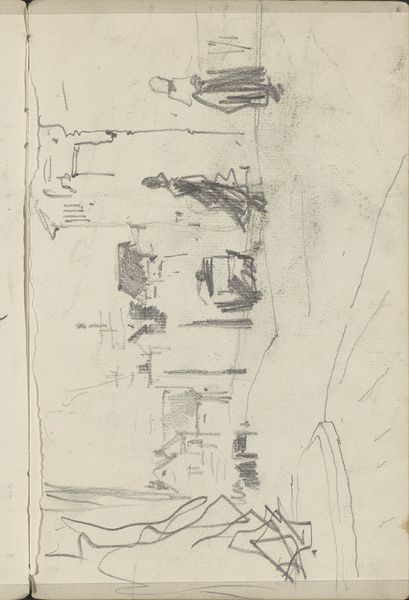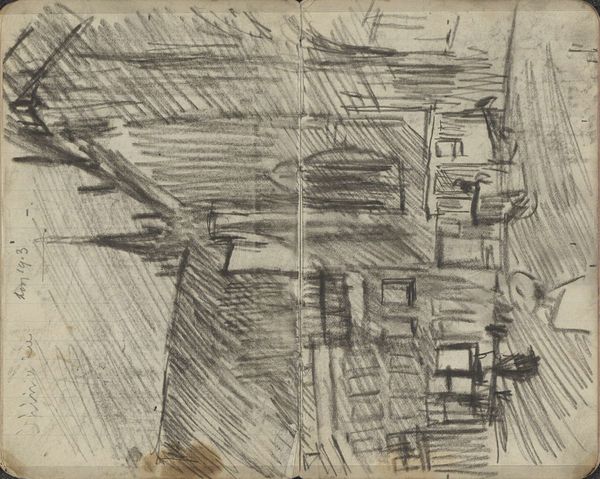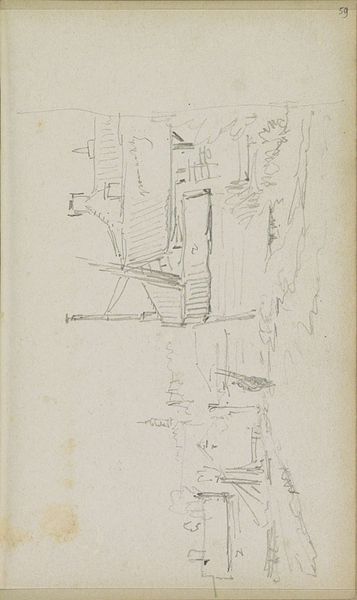
drawing, pencil
#
drawing
#
impressionism
#
landscape
#
coloured pencil
#
pencil
#
watercolor
Copyright: Rijks Museum: Open Domain
Curator: Here we have George Hendrik Breitner's "Gezicht op een gebouw, mogelijk een boerderij," dating from around 1881 to 1883. It’s currently held in the Rijksmuseum's collection, rendered in pencil, watercolor, and colored pencil on paper. Editor: Immediately, there's a compelling sketch-like quality that arrests my attention. The almost fragmented lines convey an underlying melancholy. The loose cross-hatching suggests volume and depth without committing to firm boundaries. It feels unresolved and strangely evocative. Curator: Breitner’s compositional choices are indeed fascinating. Notice how the geometric solidity of the possible farmhouse is undermined by the rapid strokes indicating surrounding atmosphere. The materiality is crucial; it is a study, an exploratory gesture, not a definitive statement. Editor: Precisely. And within those rapid strokes, there's an echoed history, especially around Dutch agrarian life and depictions of domestic stability. But something feels absent here; there are no figures truly populating the landscape, only their ghostly suggestion. What symbols of that more profound context do you think linger? Curator: In terms of formalism, consider the contrast. The sharp, near-cubic shapes set against softer, more organic lines generate a compositional tension which contributes to the viewer's interpretation of the imagery. Editor: It's almost as if the viewer is confronted with a landscape in a state of continual fading. A reflection on mortality and how places retain memories of previous occupants and histories. Is Breitner perhaps hinting at a certain ephemerality? Curator: The suggestion is valid. Moreover, look how his selection of paper serves as a crucial aspect of the visual rhetoric. It’s an integrated element impacting our emotional reception. The off-white hue suggests age. Editor: That's insightful. By engaging with such subdued symbolic undertones of disappearance, of history, it provides an eerie quality. What stays after inhabitation, the echo of lives previously lived. It suggests the importance of recognizing a subtle message conveyed in commonplace situations. Curator: From my perspective, what interests me most is the interplay between positive and negative space, creating dynamism within a rudimentary medium, and resulting in its emotive potency. Editor: Seeing it through your lens gives greater awareness to Breitner's formal structure, the work certainly transcends being a mere image of some building.
Comments
No comments
Be the first to comment and join the conversation on the ultimate creative platform.

